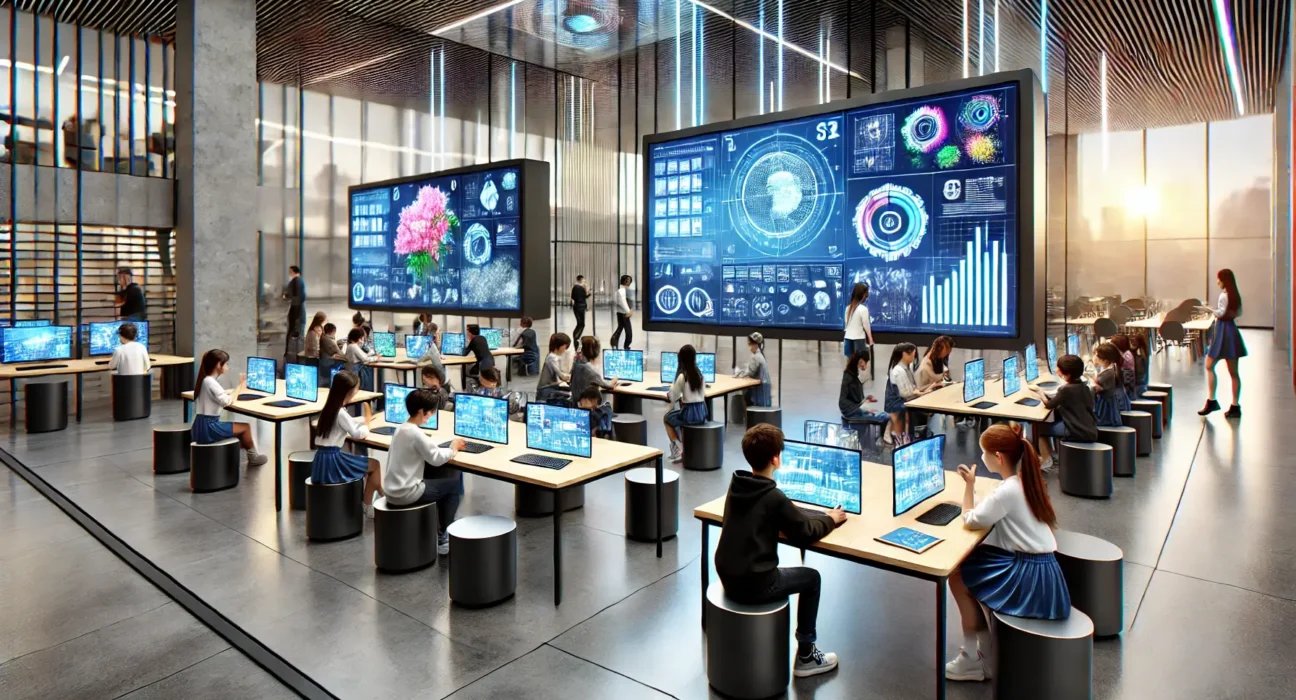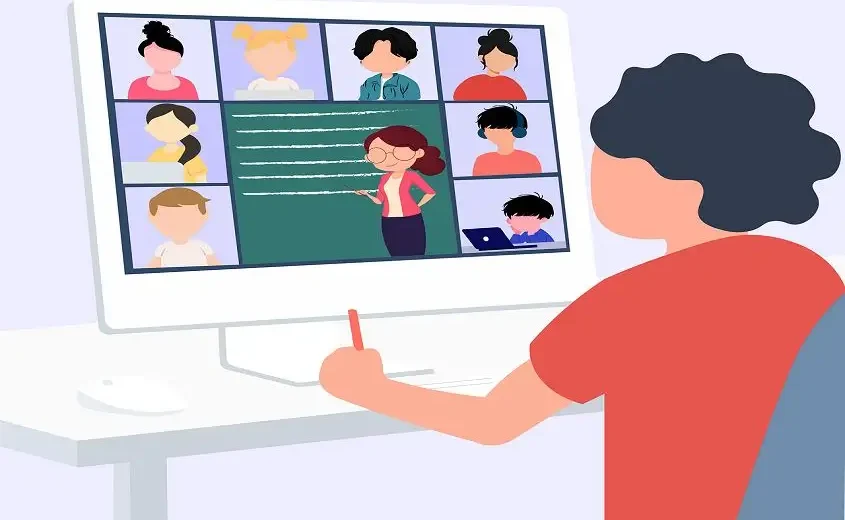In an era where the future of technology, work, and global connectivity is swiftly changing, it’s evident that the traditional classroom environment should be reviewed. The answer is Classroom 6x-an innovative educational model that aims to transform how students learn and interact. It also helps prepare students for a future that demands flexibility, collaboration and innovation. What is Classroom 6x, and how is it different from the traditional education system? This blog will examine the six fundamental pillars that make up the basis of the Classroom 6x model and the benefits and potential to change the course of education in the near future.
What is Classroom 6x?
“Classroom 6x” is a modern educational model that challenges the boundaries of traditional learning environments. The classroom is reimagined to meet the needs of the 21st century. It’s a classroom that combines technology as well as flexible spaces, individualized learning and global collaboration in order to create an enlightened and holistic learning experience. The “6x” in Classroom 6x is a reference to six fundamental pillars that are created to meet the varied requirements of today’s students as well as prepare them for the future’s problems. The pillars include:
- Technology Integration
- Flexible Learning Spaces
- Personalized Education
- Collaborative Learning
- Global Connectivity
- Student Autonomy
Each one of these elements creates an engaging, adaptive and memorable learning experience. Let’s take a look at these pillars to see how they all shape our Classroom six-x strategy.
Pillar 1: Technology Integration
The main foundation in Classroom 6x is technology, and it plays an integral role in the transformation of education. In contrast to traditional classrooms, where technology could be seen as an added tool or an obstacle, In Classroom 6x, technology is the core of learning.
How Technology Improves Learning
In a 6x Classroom Environment: technology isn’t only about computers or tablets. It is about the integration of AI-powered platforms, gaming-based learning environments and real-time assessments that allow you to customize your learning process. Imagine students making use of artificial intelligence to navigate educational resources and adjusting their difficulty according to their capabilities to ensure they’re engaged but not overwhelmed.
Students also gain from using the learning management system (LMS), which aids teachers in monitoring progress, giving immediate feedback, and adapting to each student’s individual needs of learners. Technology tools such as interactive whiteboards and AR (AR), as well as VR (VR), provide engaging, immersive learning and make the lessons come alive by utilizing techniques that textbooks can’t.
Real-world examples
Schools all over the globe have begun to embrace this model. For instance, some schools offer fully integrated 1:1 devices that allow each student access to laptops or tablets. Some schools are using VR to make models of historical events as well as scientific procedures that the students are able to experience in person, helping them develop deeper knowledge and better retention.
Pillar 2: Flexible Learning Spaces
Classroom 6x departs from the rigid row-and-column desk layout that has been the standard of traditional education. Instead, it is focused on the flexibility of learning environments that are customized to various kinds of activities and learning styles.
Why Flexible Spaces are important
The ability to adapt is vital in stimulating imagination, critical thinking and collaboration. Classroom 6x environments are equipped with moveable furniture, modular seating, and zones that are designated for silent study and hands-on activities. This change lets students engage with their learning environments in an active manner and select spaces that correspond with their educational needs at any given moment.
The Design of Future-oriented Design Future
For example, a class could contain zones for collaborative work, areas to work on their own, and areas to relax or brainstorm with a group. The idea is to motivate students to be the master of their learning environment and modify it according to the needs that are at hand.
Pillar 3: Personalized Education
One size doesn’t fit all in the world of learning. Classroom 6x understands that each pupil learns at their own rate as well as in their style. This pillar focuses on developing learning pathways that are individualized to ensure that every student’s education is meaningful, enjoyable and beneficial.
Tailored Learning Pathways
In personalized instruction, students can go through the material at their speed, receive a customized set of resources and establish their own learning goals. Learning platforms that adapt to changing needs make use of the data as well as AI to determine the strengths and weaknesses of every student by presenting content that matches their needs and advancing along with them as they acquire new abilities.
This method helps create a euphoria of accomplishment and confidence in students since they can progress at their own pace without being restricted by other students or trying to keep up with the class.
More To Read: Wheon.com Health News
The Role of Teachers
The role of teachers in a classroom that is customized teachers shifts into a role that is not solely a source of knowledge and authority to being instructors of education. Teachers make use of data-driven insights to offer support when necessary, helping students navigate their learning process instead of simply providing information.
Pillar 4: Collaborative Learning
Modern society is extremely collaborative, which is why the future of business requires that students know how to collaborate with others effectively. The fourth element of Classroom 6x emphasizes collaboration within the classroom as well as beyond.
Peer to-Peer learning
The concept of collaboration within Classroom 6x is incorporated into the educational experience. Teams, group-based problem-solving activities and peer feedback are all part of the course. Students learn to communicate effectively, resolve conflicts, and work towards common goals.
Global Collaboration
With the help of technology, students no longer have to work only with their peers in the hallway. By using video conferencing online platforms and virtual exchange programs, students can work with other students from around the world. This not only exposes students to different perspectives but also helps them develop an awareness of global citizenship that is essential in today’s interconnected world.
Pillar 5: Global Connectivity
In the digital age, global connectivity is vital. Classroom 6x helps students prepare for a world that is becoming increasingly interconnected, connecting them to the world’s learning communities and encouraging global perspectives.
Broken Boundaries
The Classroom 6x utilizes technology to eliminate geographic boundaries, allowing students to connect with peers across the globe. Virtual classrooms facilitate international collaborations, such as collaborations with students from various countries, and allow them to have the opportunity to be directly connected to global issues and cultural diversity.
Cultural exchange, as well as Global Learning
Global connectivity expands students’ horizons and helps students understand different worldviews, cultural contexts, and worldviews. Through virtual exchange or linking to schools from different regions of the globe, students develop a better knowledge of global issues, including climate change, social justice, and economic growth.
Pillar 6: Student Autonomy
Finally, Classroom 6x allows students to be in charge of their learning. The ability to control their learning is essential for developing self-regulation, critical thinking skills as well as a lifelong passion for learning.
Encourages self-paced learning
In the Classroom 6x environment, students are free to pursue their education at their own speed by deciding when to dive deeper into topics that appeal to them or seek assistance on subjects they find difficult. The self-regulated learning model lets students set themselves goals, monitor their progress, and take responsibility for their academic performance.
Flipped Classrooms, as well as Student-Led projects
Classrooms that are flipped are an excellent example of how autonomy could integrate into learning. In a classroom that is flipped, students are exposed to the latest material outside of class with books or videos, freeing the time of class for more exploration, discussion and learning through projects. Students also lead in their projects, which allows students to build the ability to lead and solve problems.
Overcoming the Challenges of Classroom 6x
Although Classroom 6x is a great idea, its implementation is fraught with some challenges. In particular, integrating technology in a meaningful manner requires significant investments in infrastructure, education for teachers, and providing equal use of digital tools for every student. Furthermore, the transition from traditional methods of teaching towards more adaptable, personalized learning demands a shift in mindset from administrators, educators and decision-makers.
Conclusion:
The future of learning is shifting towards environments that are flexible, individual and collaboration-oriented. Classroom 6x is the next stage in education advancement – one that teaches students about a world characterized by the advancement of technology connectedness across the globe, as well as complicated problem-solving. As schools embrace this new method, we can anticipate a new generation of students who are better prepared to deal with the challenges that will come in the near future.
Through integrating technology, creating spaces for learning that are flexible, creating customized educational experiences that encourage collaboration, expanding global perspectives and giving students greater autonomy, Classroom 6x offers an exciting learning experience that addresses the demands of today’s students while preparing them for the future’s problems.




